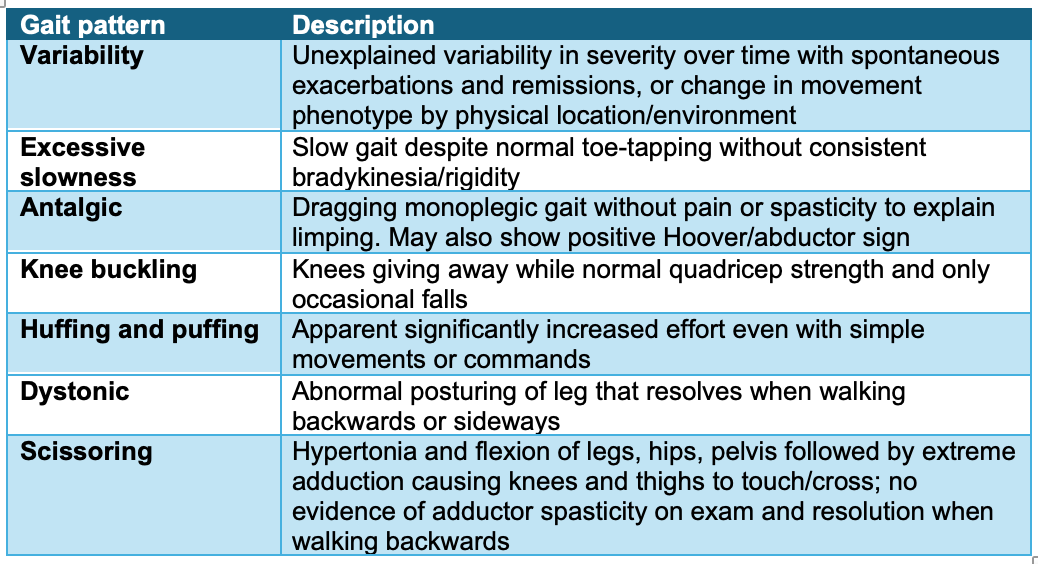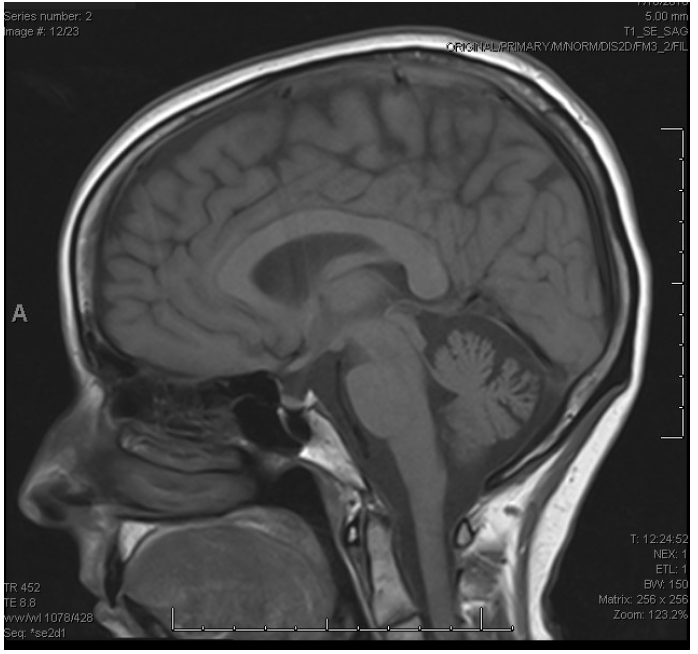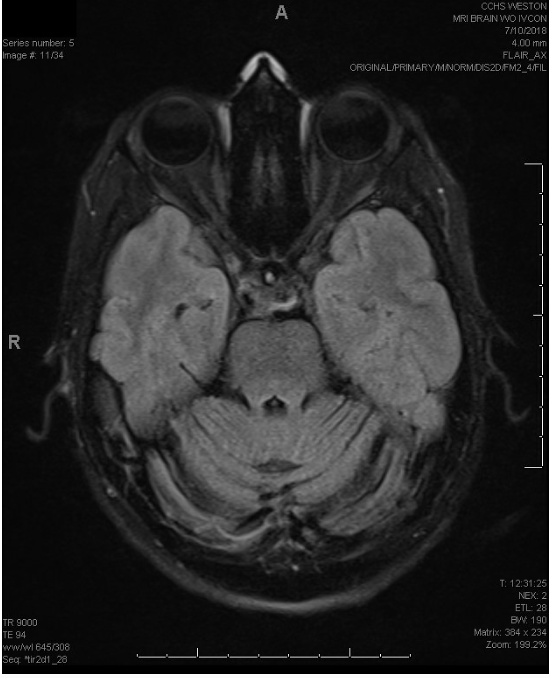Objective: –
Background: Functional neurologic disorder (FND) can be a precursor to neurodegeneration. FND is reported as a risk for developing Parkinson’s disease (PD) [1,3]. Prior studies have found that some patients with psychogenic parkinsonism have abnormal DAT scans, pointing to evidence of underlying PD [2]. Cerebellar degeneration is associated with dysarthria, dysphagia, abnormal gait, as well as cerebellar cognitive affective syndrome (CCAS). Certain spinocerebellar ataxia (SCA) types, including SCA8, frequently are seen with neuropsychiatric comorbidities including agitation, irritability, disinhibition, and emotional lability [4]. Here we present a case of SCA8 presenting with FND years prior to classic symptomatology.
Method: Patient is a 61-year-old right-handed female with no known past medical or family history who developed an abnormal gait at age 54. MRI-brain revealed cerebellar atrophy (figure 1). Her gait disorder was characterized by left quad extension with each step walking forward which improved with walking backwards, barefoot, and with effortful concentration. She developed anxiety/depression and mood lability for which she was on an SSRI, as well as cerebellar dysarthria five years after functional gait disorder diagnosis. Causes of cerebellar atrophy were investigated. Laboratory workup including autoimmune and paraneoplastic panel from Athena Diagnostics were unremarkable. Ataxia panel revealed positive SCA8 (ATXN80S gene with CTG 112 and 29 repeats). Otherwise to date, besides speech, SARA exam and eye movements remained normal.
Results: –
Conclusion: We report a patient with SCA8 whose first motor manifestation was a functional gait disorder. FND association with PD is more established, however development of SCA is more novel. This patient’s FND developed five years prior to the onset of more classic cerebellar symptoms but did not predate cerebellar atrophy seen on MRI. Similar pathophysiology of the CCAS could underlie FND development in patients with cerebellar degeneration. Clinicians should consider cerebellar degeneration in patients who develop functional disorders. FND patients should be followed over time while observing for development of non-functional symptoms including parkinsonism and cerebellar signs.
Examples of clues seen on exam of functional gait
MRI saggital cut demonstrating cerebellar atrophy
MRI axial cut showing cerebellar atrophy
References: 1. Ambar Akkaoui, M., Geoffroy, P. A., Roze, E., Degos, B., & Garcin, B. (2020). Functional motor symptoms in parkinson’s disease and functional parkinsonism: A systematic review. The Journal of Neuropsychiatry and Clinical Neurosciences, 32(1), 4–13. https://doi.org/10.1176/appi.neuropsych.19030058
2. André Carvalho Felı́cio, Clécio Godeiro-Júnior, Moriyama T, et al. Degenerative parkinsonism in patients with psychogenic parkinsonism: A dopamine transporter imaging study. Clinical Neurology and Neurosurgery. 2010;112(4):282-285. doi:https://doi.org/10.1016/j.clineuro.2009.12.010
3. Kurtis Monica, Parees Isabel. Functional movement disorder comorbidity in Parkison’s disease: Unraveling the web. Parkinsonism and Related Disorders. Jan 2021. 82; 138-145.
4. Karamazovova S, Matuskova V, Ismail Z, Vyhnalek M. Neuropsychiatric symptoms in spinocerebellar ataxias and Friedreich ataxia. Neuroscience & Biobehavioral Reviews. 2023;150:105205. doi:https://doi.org/10.1016/j.neubiorev.2023.105205
5. Nonnekes J, Růžička E, Serranová T, Reich SG, Bloem BR, Hallett M. Functional gait disorders: A sign based approach. Neurology. 2020;94(24):1093-1099. doi:https://doi.org/10.1212/WNL.0000000000009649
To cite this abstract in AMA style:
S. Jimsheleishvili, D. Crandon, J. Margolesky. Case Report Functional Neurological Disorder as a Harbinger of Spinocerebellar Ataxia 8 [abstract]. Mov Disord. 2024; 39 (suppl 1). https://www.mdsabstracts.org/abstract/case-report-functional-neurological-disorder-as-a-harbinger-of-spinocerebellar-ataxia-8/. Accessed April 1, 2025.« Back to 2024 International Congress
MDS Abstracts - https://www.mdsabstracts.org/abstract/case-report-functional-neurological-disorder-as-a-harbinger-of-spinocerebellar-ataxia-8/



